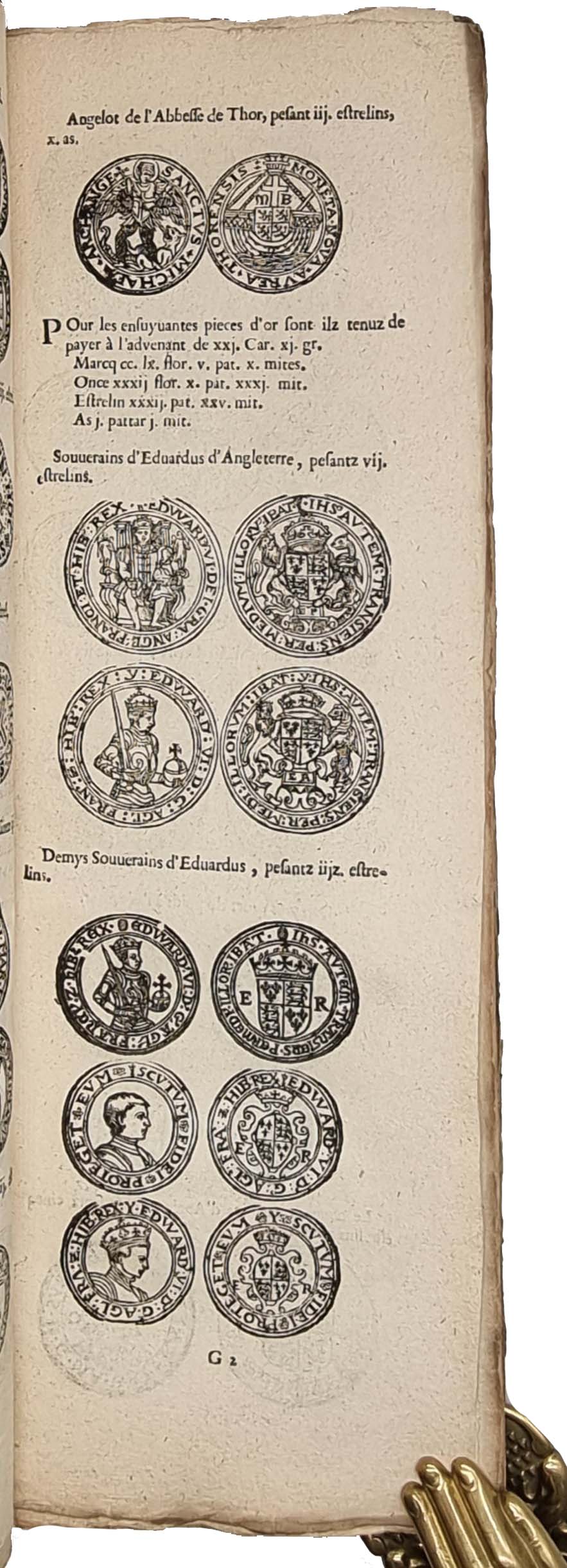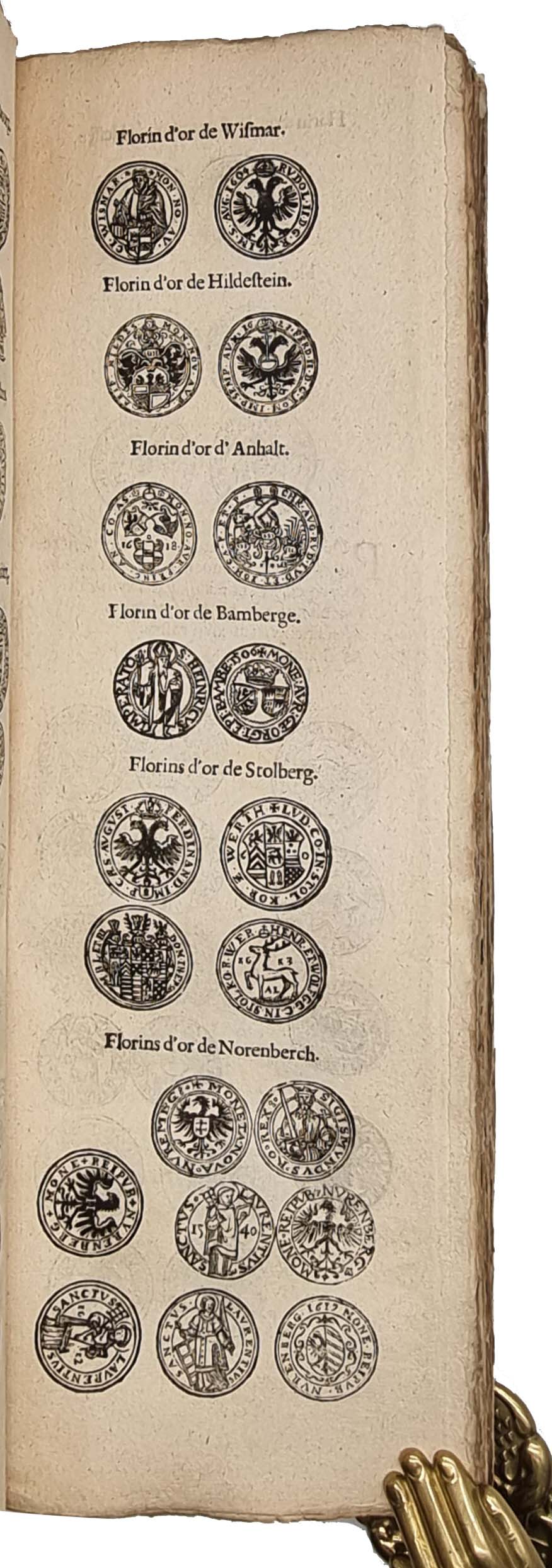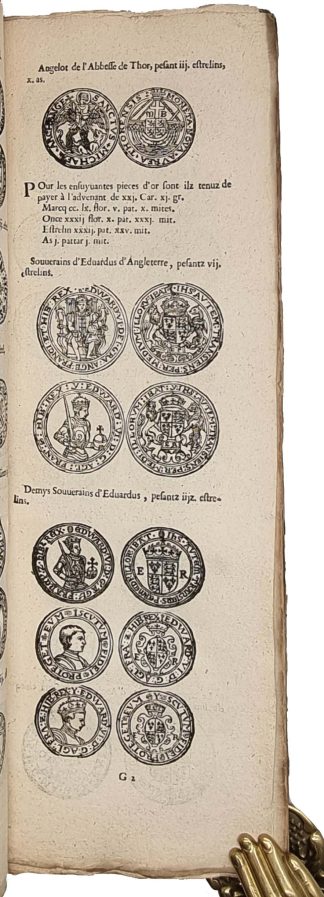[CONSEILLERS ET MAÎTRE GÉNÉRAUX DES MONNAIES.]
LAVISH NUMISMATICS
Ordonnance et instruction selon laquelle se doibuent conduire & regler doresenauant les changeurs ou collecteurs des pieces d’or & d’argent.
Antwerp, Chez H. Verdussen, 1633£2,850.00
FIRST EDITION. Half 4to on thick paper. 126 unnumbered ll., [*]4 A-2G4 2H2. Roman letter. Large woodcut arms of the Habsburgs to t-p, 1685 small woodcuts of gold and silver coins, decorated initials and ornaments. Half-title and all edges dusty, uncut, first three ll. yellowed, a few outer edges a bit soiled, light water stain to a couple of outer corners and edges. A very good, clean copy in modern calf over C19 marbled boards, corners bumped.
A very good clean copy of the first edition of this lavishly illustrated work—a scarce, important reference book issued by the Council of Finance of the Habsburgs. It was addressed to officers in charge of exchanging or collecting money. In addition to an initial section with regulations concerning their professional behaviour and knowledge, it provides a detailed and comprehensive catalogue of all existing coins, reproduced according to their actual size, which could be accepted in the Habsburg territories in the year 1633. The main purpose was to defy attempts of ‘agiotage’ or financial fraud achieved by altering the value of money (hence the price of goods) as compared to received exchange rates (and the limits of market negotiation). The 1685 incredibly detailed (and never repeated) woodcuts provide faithful representations of the two sides of each gold or silver coin (whole, demy, quarter), as well as the exchange value in ‘estrelin’, ‘marq’, ‘once’ and ‘aes’, beginning with regional Habsburg currency from Flanders (e.g., ‘franc’, ‘Pietre d’or’, ‘Toison d’or’) to Spain (e.g., ‘Castilien d’or’), and continuing with Portugal (e.g., ‘grand Crusart’ or ‘manuel’, ‘ducat’), England (e.g., ‘noble à la Rose’, ‘noble d’Eduart’) and ducats from Germany, Poland and several parts of Italy. It also includes the ‘escudo San Tomé’ or ‘santhomé’, with the motto ‘INDIA TIBI CESSIT’—colonial gold currency printed in Goa by the Portuguese starting from the mid-C16. A lavishly illustrated, significant manual for the history of currency.
Brunet IV, 210: ‘rare’; Goldsmiths 654. Not in Kress.In stock





